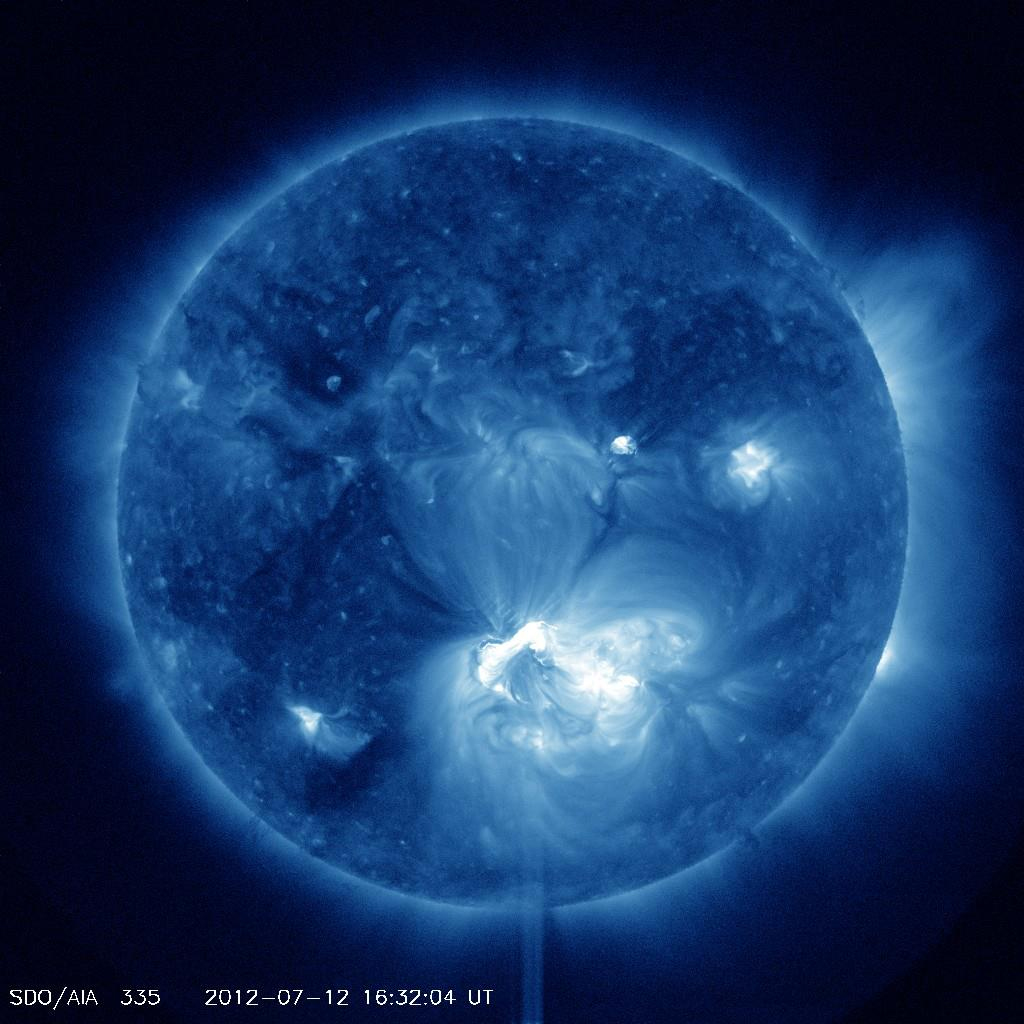Solar Storm Bombarding Earth Today

This story was updated 1:42 p.m. ET to include information from the most recent update from NOAA space weather officials.
Space weather experts are keeping close watch for a solar storm expected to reach Earth today (July 14), the fallout from a powerful solar flare earlier this week.
The solar storm originated from a massive solar flare on Thursday (July 12) that included a powerful eruption on the sun, known as a coronal mass ejection. The eruption sent a wave of charged solar plasma toward Earth, which was expected to arrive sometime today, according to forecasts by NASA and the NOAA-run Space Weather Prediction Center in Colorado. The CME could amplify Earth's northern lights displays, some space weather officials have said.
Earlier forecasts predicted the CME would arrive at Earth between 5 a.m. and 9 a.m. EDT (0900 and 1300 GMT), with an error margin of plus or minus seven hours. A 1:06 p.m. EDT (1706 GMT) update from the Space Weather Prediction Center stated that the CME has not yet arrived.
"As the forerunner solar wind protons continue a steady increase, indicators that the CME is on the way, the wait continues for it to impact the Earth's magnetic field," center officials wrote in an update. "Look for that in the next few hours."
This weekend's solar storm originated from one of the most powerful sun flares to occur this year. The flare registered as an X1.4-class sun storm, one of the strongest flares the sun can unleash. It marked the sixth X-class solar flare of 2012.
The solar storm erupted from the giant sunspot AR1520, or Active Region 1520, which is actually a group of sunspots that at its peak may have stretched across186,000 miles (300,000 kilometers) of the sun's surface, NASA scientists have said. [Photos of Huge Sunspot AR1520]
Breaking space news, the latest updates on rocket launches, skywatching events and more!
An earlier center update released late Friday stated that the solar storm could trigger a level G2 geomagnetic storm on Earth, a moderate-level event capable of sparking auroras at latitudes as low as New York or Idaho, sometime after 9 a.m. EDT. Most northern lights displays, which occur when charged solar particle interact with Earth's upper atmosphere, are confined to high-latitude regions around the polar regions by the planet's magnetic field.
"Weekend auroras are likely," the space weather-tracking website Spaceweather.com wrote in an alert.
The Space Weather Prediction Center is tracking AR1520, as well as several other active spots on the sun, for signs of more activity.
"All eyes are on the solar wind data to note the expected passage on Saturday of a Coronal Mass Ejection (CME) from Thursday's solar event," center officials wrote in an update late Friday (July 13).
The solar storm is not expected to pose a major risk to satellites and spacecraft in orbit, or power systems on Earth, officials have said.
The sun is currently in the middle of an active phase in its 11-year sunspot cycle. The current cycle is known as Solar Cycle 24 and expected to peak in 2013.
Editor's note: If you snap a photo of sunspot AR1520 or any amazing northern lights photos and you'd like to share them for a possible story or image gallery, please send images and comments to managing editor Tariq Malik at tmalik@space.com.

Follow SPACE.com on Twitter at @Spacedotcom. We're also on Facebook & Google+.
Join our Space Forums to keep talking space on the latest missions, night sky and more! And if you have a news tip, correction or comment, let us know at: community@space.com.

Space.com is the premier source of space exploration, innovation and astronomy news, chronicling (and celebrating) humanity's ongoing expansion across the final frontier. Originally founded in 1999, Space.com is, and always has been, the passion of writers and editors who are space fans and also trained journalists. Our current news team consists of Editor-in-Chief Tariq Malik; Editor Hanneke Weitering, Senior Space Writer Mike Wall; Senior Writer Meghan Bartels; Senior Writer Chelsea Gohd, Senior Writer Tereza Pultarova and Staff Writer Alexander Cox, focusing on e-commerce. Senior Producer Steve Spaleta oversees our space videos, with Diana Whitcroft as our Social Media Editor.
